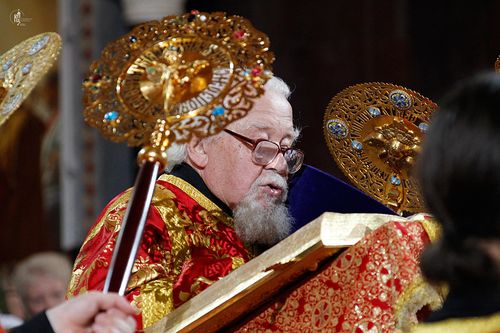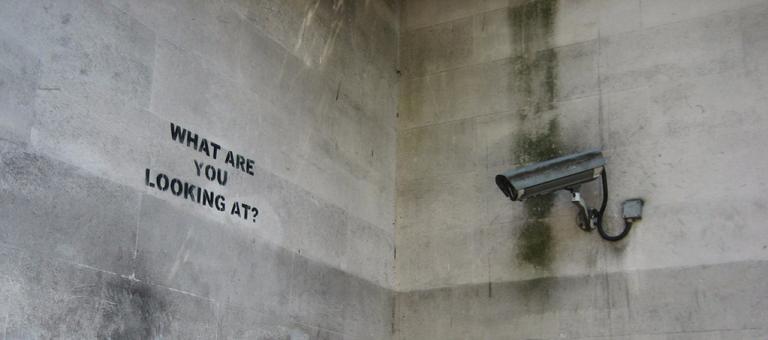The mode in which a message is delivered has the power to negate the content of the message. I may express my undying fidelity for a particular woman with words true and well-phrased, but as long as I send these words in a text-message, I obscure my own meaning. I might post a beautiful image of God with a powerful excerpt from Holy Scripture on Facebook. My intent is zealous, my faith is real, the translation from the Hebrew is accurate — and it is all rendered meaningless by being viewed in the mode of the News Feed, namely, as an “item of interest,” selected from similar items by an algorithm, offering itself as a momentary distraction to be “liked” or ignored, surrounded by the possibility of moving past it to other, more interesting distractions.
 What good is it if 10,000 people view God in this manner, if the very mode by which they view him reduces God and his Word to an item of interest? What good is it if people “view” the truth, “like” the truth, and “comment” on the truth if the mode they are engaged in actively works against their believing the truth? The mode in which a message is received may undo the message. If we think the Internet has made evangelization easier, we are fools. The very mode by which we exist on the Internet — as impersonal spectators — works against Christianity — which is not a spectacle, but an encounter with a person. The first goal of any one who wishes to evangelize on the Internet must be to overcome the Internet.
What good is it if 10,000 people view God in this manner, if the very mode by which they view him reduces God and his Word to an item of interest? What good is it if people “view” the truth, “like” the truth, and “comment” on the truth if the mode they are engaged in actively works against their believing the truth? The mode in which a message is received may undo the message. If we think the Internet has made evangelization easier, we are fools. The very mode by which we exist on the Internet — as impersonal spectators — works against Christianity — which is not a spectacle, but an encounter with a person. The first goal of any one who wishes to evangelize on the Internet must be to overcome the Internet.
This possibility of undoing the message by the mode in which you yodel gains special importance with respect to the Divine Liturgy. Catholics have, for the past 60 years or so, tended towards presenting the Divine Liturgy in a mode of similarity. We want to “get people to come,” and so we strive to make our liturgies similar to other experiences, to provide that condition by which some one may enter comfortably into its presence, as I am comfortable to be in the presence of someone I already know, comfortable to engage a conversation with people who have similar interests, similar views.
The music of the Mass is made similar to the music of our culture. The demeanor of the Mass is made similar to the “Christian services” of our culture. The clothing we wear to Mass is made similar to our everyday clothing. The posture, structure, language, architecture, the position of priest to people — all this, and nearly anything that can be presented in a mode of similarity is thus presented. And, in a sense, it works. People come. But what does the mode of similarity do to the way in which people encounter the Mass? What does the mode do to the message?
To understand this, we need a deeper understanding of similarity and dissimilarity. Similarity may be a condition for comfort, but dissimilarity is the necessary condition for love. Because a boy and a girl have “something in common” they can meet, comfortably enter into each other’s presence, and strike up a conversation, but only because of the fact that they are not “in common” can they fall in love, can she — utterly dissimilar to him — and he — dissimilar to her — strive for personal communion — that difficult, wonderful embrace of two entirely unique and dissimilar lives.
Because I am used to something, I am not afraid to participate in it, and in this sense, a liturgy of similarity succeeds. But because I am not used to something, because it is utterly other, I am pulled into the heart of a mystery. Similarity may provide the occasion for a meeting and a grouping, but dissimilarity provides the occasion for a binding. Because I do not know her, I strive to understand. Because I cannot fathom her, I gaze all the longer. As velcro clings to what it is not, as opposite charges attract and as the opposition of dissimilar colors make wondrous relations in a far more obvious way than mixtures of, say, a pale yellow and a similar greenish-yellow — so dissimilarity is the binding force of relation.
What good is it if the mode of similarity brings every man in the world to the Divine Liturgy, if by the very mode that it brings them there, it undoes the entire point, which is not simply being there, but being in love? Similarity engenders comfort because it requires nothing of us. If a person is just like me in every respect, then there is no effort required of me to get to know them, to strive after them. There is no ecstasy, that is, no getting beyond myself. The fact that something is similar may just as well be an occasion for boredom as for unity — and hasn’t millennial boredom with the liturgy been an equally observable outcome of the mode of similarity as millennial presence at the liturgy?
To say something is similar is to say it is already known, but the point of the Divine Liturgy is that it is the Pascal Mystery, the Pascal Unknown, and precisely because it remains unknown, it remains something worth applying the passion of our entire lives towards, to strive towards knowing.
If the point of the Church is to make her children comfortable with God, a liturgy of similarity that “meets people where they are” make sense. If the point of the Church is to call her children to love God, to strive after him and to seek intimate communion with him, then a liturgy that opposes us makes sense, a liturgy drenched in a dissimilarity that accentuates the mysteries that we cannot understand — and thus must strive for, bow before, and commit our lives to surge towards. In short, what is needed is a liturgy that requires ecstasy of us. This reconciles itself in a series of paradoxes, that the unrelatable is the most relatable, the irrelevant is the most relevant, and the unfamiliar the greatest source of our desire for familiarity, for intimacy, and for union.
All this being said, similarity is not bad. Similarity provides the occasion for dissimilarity to bind. Consider Jesus Christ. We draw close with the little children because he is a man — our friend and our brother, something similar. But in this similarity we recognize the undeniable dissimilarity — that he is God, infinite, almighty, all-powerful, all-knowing — and thus we strive after him with all our heart, mind, soul and strength. Should this not be the case with the Divine Liturgy? Should we not have the similar — the music, perhaps, the homily, the clothes, and the modern architecture — become the occasion for an encounter with the dissimilar — the Eucharist?
In a word, no, for then the Divine Liturgy becomes two things, when it is in reality one thing. No part of the Mass should be an advertisement for the Mass. No “type” of Mass — a “contemporary Mass” or a “youth Mass” — should be reduced to a stepping stone to a more “mature Mass.” I take this as self-evident, that the Mass is either a re-presentation of Christ’s Sacrifice, or it is not, and if it is, then it is one thing, complete in itself, sufficient, final, eternally this — and that our participation in this one thing should reflect its unity instead of pulling against it.
The good news is that we are not caught between the choice of attracting people to Mass and letting the Mass be precisely what it is, in all its incens-y, ringing, silent, dark, unbearably bright and grotesque mystery, its complex simplicity and its simple complexity. For precisely by letting the Mass be what it is, and indeed, working hard to reveal the Mass as the Paschal Mystery in accordance with the rubrics and teachings of the Church, we attract, for dissimilarity is always a more attractive and binding force than similarity. An intentionally dissimilar liturgy may be more uncomfortable, but we were not made for comfort. We were made for love, that wonderful, uncomfortable ecstasy towards that which we are not.
Here then, have my unauthoritative, probably-hyperbolic, unspecific but nevertheless believed and possible answer to the question of how to attract young people to the Mass: Stop trying. Stop using the Mass as an advertisement for itself. Do not let the mode by which you bring people undo the very reason you are bringing them. Let our lives bring people to the Liturgy, let our lives contain that similarity, that natural and virtuous relatability that provides the necessary condition of comfort for drawing people near to a mystery — but let the mystery remain a mystery! In short, let us be honest, not altering the Mass in order to get people to come to it, or hushing up the traditions and the mysterious flourishes of the Mass out of fear that it won’t be “relatable.” The truth about people is strange, that we most want what we cannot have, that we are most intrigued by what we cannot understand, and that we are most fulfilled by an encounter with that which is utterly beyond us than with that which fits neatly and known into the fabric of our lives. Accentuate the mystery with that accentuation present in the very rubrics of the liturgy, do it for no reason other for love of the mystery, and love your neighbor, that you might give him a reason, a provocation and a courage to plunge into the very source of your love — the Divine Liturgy.













